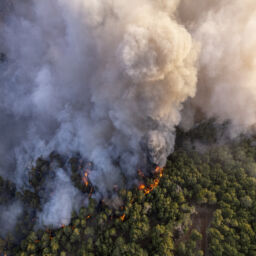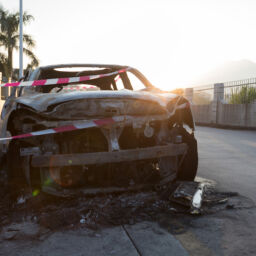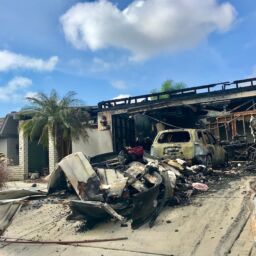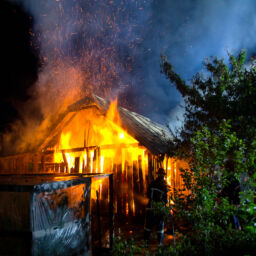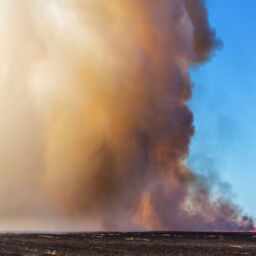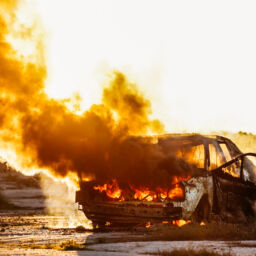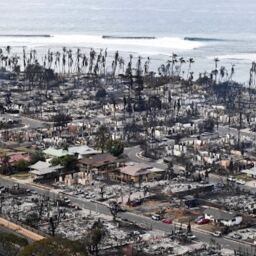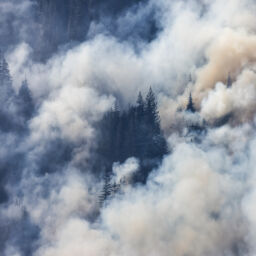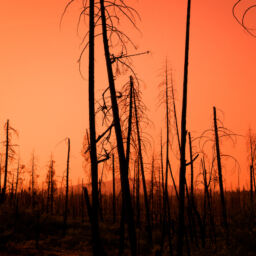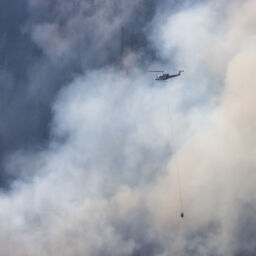It has been one month since a wind-whipped wildfire engulfed the historic Hawaiian town of Lahaina, and the authorities are still trying to determine exactly how many people died in the nation’s deadliest conflagration in more than a century.
Nearly all of Lahaina has now been searched by teams of rescuers, cadaver dogs and anthropologists trained to detect fragments of human remains, yet the official death toll has stood at 115 people for more than two weeks.
That has meant an agonizing wait for the families of more than 380 people whose names populate a list that the F.B.I. says it is still trying to reconcile, even as many loved ones have begun to accept the grim reality of loss.
Kimberly Buen said that only in the last week did she lose hope that her missing father could have survived the fire, after an F.B.I. agent visited her home in Southern California to take a DNA sample.
“Every phone call I get, I think I’m getting that call, the call to tell me that they’ve matched my dad’s DNA, that they found him deceased,” Ms. Buen said. “Before, I was answering every call, ‘Oh, did they find him? Did they find him?’ And now, I’m in the mode, ‘Did we recover him?’”
Ms. Buen’s father, Maurice Buen, was a sport fisherman and would have turned 80 on Sept. 2. She said she had spent the last month calling, again and again, the F.B.I., the Red Cross, FEMA, the Maui Police Department, the hospital in Honolulu that received burn victims, and the public housing authority that managed the building where her father lived.
In the chaos of the early days following the fire that raced down the hillsides to the shore of the Pacific Ocean, consuming neighborhoods and all manner of buildings, numerous survivors were stranded without cellphone service. With families desperately searching for loved ones, the list of the missing at one point swelled to more than 2,000.
But the F.B.I. — after collecting various lists from shelters, the Red Cross and the Maui Police Department and cross-referencing them — whittled the number down to 385 people at last count. The figure included two victims whose remains have since been confirmed to be among the dead. At the same time, the Maui Police Department said it was actively investigating 41 missing persons cases and had asked relatives of those on the F.B.I.’s list to also file missing persons reports if they had not already.
The authorities have said they had confirmed 115 deaths, either by collecting sets of remains analyzed by DNA or through the discovery of bodies that were mostly intact; 55 of those have been identified and their names announced. Five more people have been identified, but their names have not yet been released because the authorities have not been able to notify their families.
The last time the death toll changed was on Aug. 21, the day that President Biden visited Lahaina, a span of time that reflects the new phase of the recovery effort, as well as the likelihood that many people’s bodies were reduced to unrecoverable ash.
The actual death toll is unlikely to be determined for weeks or months. The lack of new information about the death count at this stage is similar to the aftermath of other disasters like the Camp fire, the 2018 Northern California blaze in which 85 people died, said Stephen Meer, the chief information officer of ANDE, a Colorado-based company whose rapid DNA technology has been used to identify victims in Lahaina.
He said that ANDE’s technicians have left Maui, and that determining the final death toll would now largely rely on slow-paced detective work — for instance, interviewing the family and friends of those missing to determine if they were in Lahaina that day and where. The authorities will have to determine whether their investigative results are sufficient to declare those still missing as dead.
“This is a very common thing,” Mr. Meer said. “This is exactly what we’d expect to see.”
Authorities still field calls from those who believe they have spotted someone on the list of missing people. The tips, while confusing, hearten family members who post continuously on social media and comb through Facebook posts.
“We’re still hoping to find them alive even though there’s a lot of news saying there’s no more chance,” said Manuel Ceralde, 52, whose mother-in-law and sister-in-law were last seen at their rented house on Mela Street in Lahaina when the fires broke out.
Mr. Ceralde said Revelina Baybayan Tomboc, 82, and her stepdaughter Bibiana Tomboc Lutriana, 59, immigrated from the Philippines about three decades ago. After a stint in California, they settled on Maui and had lived in Lahaina for about seven years. Ms. Tomboc had been a housekeeper but was retired, and Ms. Lutriana worked as a clerk at a retail store.
The two lived only a couple blocks from Mr. Ceralde and his wife, Claire, whose home burned. The couple now watch over their two children in tiny rooms at separate hotels, as they wait for news.
“It’s really hard,” Mr. Ceralde said. “Our beautiful house became ashes. And with them still missing, everything is lost for us.”
Lahaina today is a place of harsh contrasts, the burned out areas resembling the ash-filled ruins of Pompeii, down the road from a lush, manicured resort. One moment, the air is still acrid and smoky; the next, filled with the sweet scent of plumeria. Everywhere are makeshift memorials, with signs reading “Lahaina Strong” or “Pets are Family Members, too.”
[…]
The heart of Lahaina is still closed to the public — only searchers and workers from various government agencies have been allowed in. But Darryl Oliveira, the interim administrator with the Maui Emergency Management Agency, said the county had moved closer toward allowing people to return and inspect their properties before the Army Corps of Engineers begins bulldozing and clearing debris.
[…]
Full Story: NYT September 8, 2023




